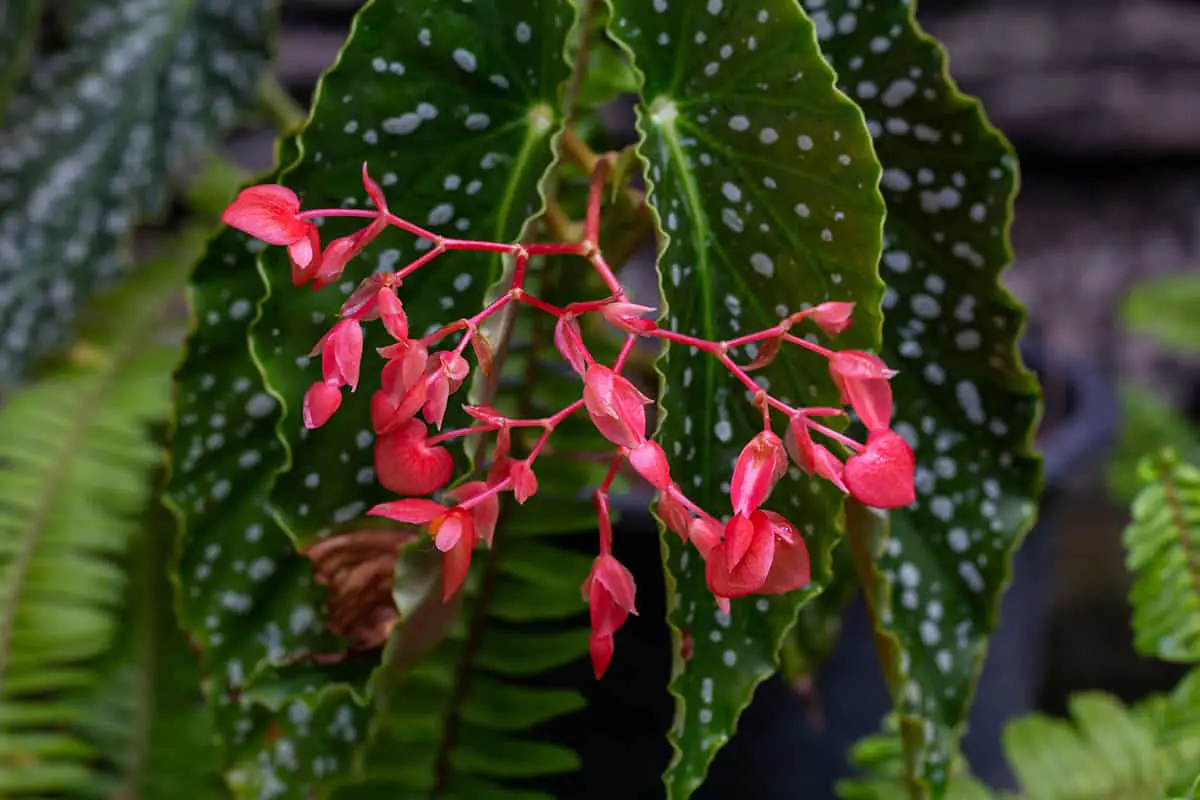Have you ever walked into a room and felt instantly drawn to a plant with striking, wing-shaped leaves speckled with silver dots? That’s the Angel Wing Begonia, a real showstopper that can add drama and beauty to any indoor setting. This guide will help you master the art of caring for this stunning plant, ensuring it remains a vibrant centerpiece in your home for years to come.
| Common Name | Angel Wing Begonia |
| Botanical Name | Begonia coccinea |
| Family | Begoniaceae |
| History & Origin | Native to Brazil |
| Plant Type | Perennial houseplant |
| Mature Size | Up to 5 feet tall |
| Sun Exposure | Bright, indirect light |
| Soil Type | Light, well-draining, high in organic matter |
| Soil pH | Slightly acidic to neutral (6.1 to 7.5) |
| Temperature | Prefers 65-75°F (18-24°C) |
| Watering | Keep soil consistently moist, reduce in winter |
| Fertilizing | Monthly during growing season, balanced formula |
| Bloom Time | Spring to autumn |
| Flower Color | Red, pink, or white blooms |
| Hardiness Zone | 10-11, typically grown indoors |
| Toxicity | Toxic to pets |
| Common Problems | Powdery mildew, root rot, spider mites |
Table of Contents
Light
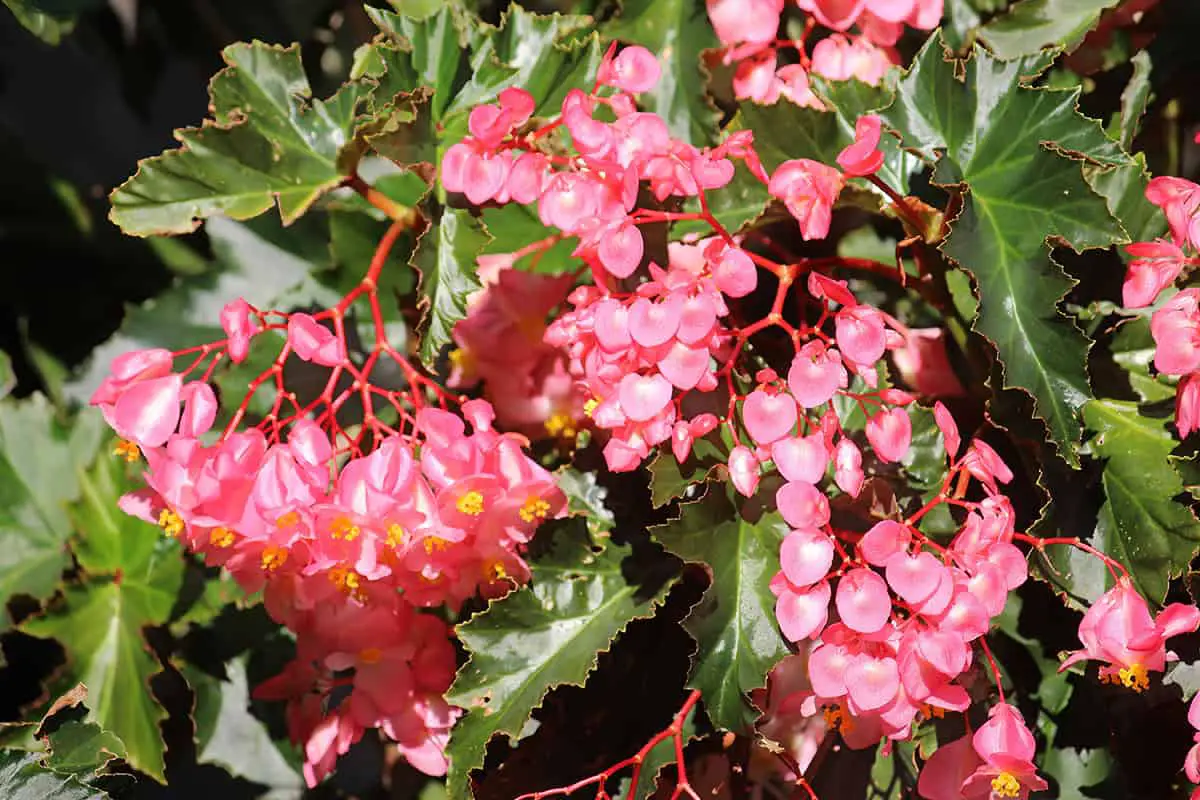
Angel Wing Begonias thrive in abundant light. The light should be bright yet indirect. Direct sunlight will harm your plant’s unique leaves. Morning light or shaded afternoon rays suit them best.
You want your Angel Wing Begonia to flourish. Place it in east or north-facing windows to provide optimal light conditions. Too little light will lead to poor leaf color and fewer flowers.
In your home, light intensity varies with the season. Rotate your plant regularly for uniform growth. This ensures all sides receive equal light and maintains the plant’s symmetry.
Soil
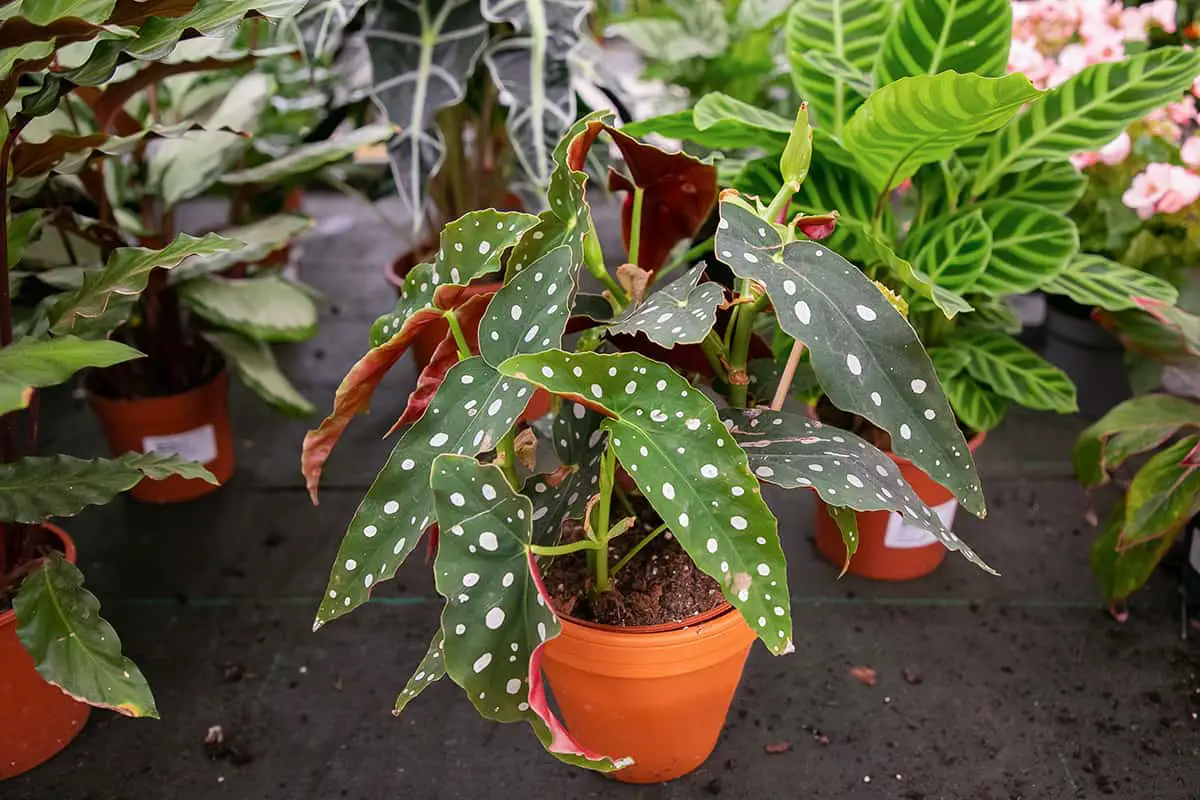
When growing Angel Wing Begonias, choosing the right soil is crucial.Your plants will thrive in a well-draining medium. A mix of coir or peat moss with vermiculite and perlite creates an ideal foundation. Include minimal potting soil or organic material to maintain balance and foster health.
Begonias are susceptible to root rot, so drainage is key. Ensure your containers allow excess water to escape. This practice will help prevent water from pooling around the roots. If you suspect your soil is too dense, amend it with additional perlite to improve aeration.
Your Angel Wing Begonias prefer a slightly acidic to neutral pH range. Aim between 6.0 and 7.0 for best results. You can test your soil’s pH using a simple kit from your local gardening store. Adjustments might involve incorporating specific amendments to manage pH levels.
Remember, the quality of the soil can greatly influence your plant’s health and growth. Regularly check that your Angel Wing Begonias’ soil conditions support their needs for optimal vitality.
Water
This plant prefers consistent moisture. You should water when the top inch of soil feels dry. It’s vital not to overwater, as this can lead to root rot.
In warmer months, Angel Wing Begonias typically require more water. Ensure you provide enough to keep the soil mildly moist. During cooler seasons, reduce the frequency, allowing the soil to dry out slightly between waterings.
The water quality is also crucial. Use room-temperature water. If your tap water is hard or contains chemicals, it’s better to use filtered or distilled water. This prevents leaf tip burn, which can occur from mineral buildup.
Remember, proper drainage is as important as the watering itself. Plant your Begonia in a pot with drainage holes. This ensures excess water can escape, protecting the roots from sitting in moisture, which can cause harm.
Temperature and Humidity
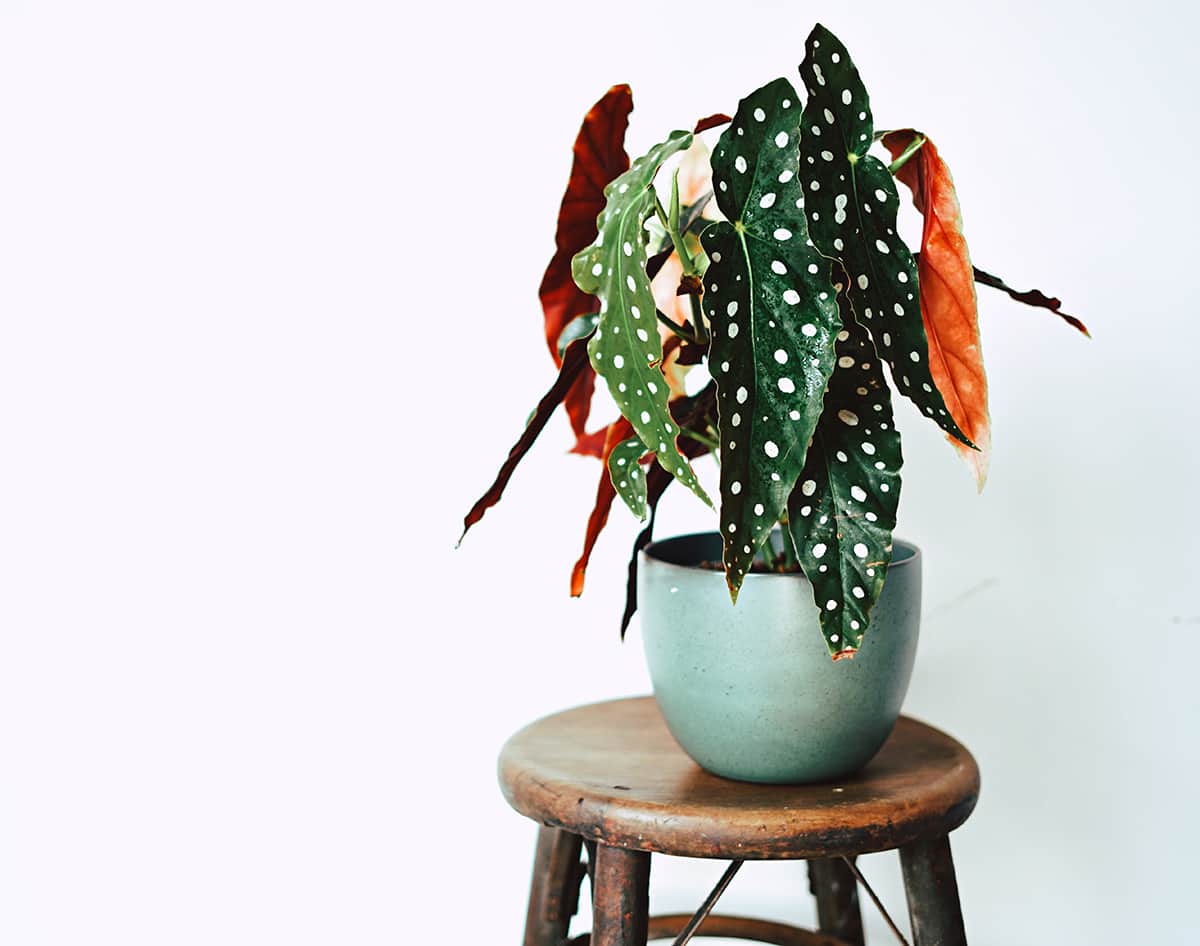
The Angel Wing Begonia thrives in warm environments. You should maintain indoor temperatures between 60 to 80 degrees Fahrenheit. This range copies their natural tropical habitat. High humidity around these plants helps them flourish. In your home, a humidity level of 50% or more is ideal.
You might notice signs if your Angel Wing Begonia is unhappy with the temperature or humidity. Drooping leaves indicate it’s too cold, while brown leaf edges suggest low humidity. To increase humidity, place a tray of water near your plant, or consider using a humidifier.
Keep your Angel Wing Begonia away from drafts and sudden temperature changes. Position it in a stable environment. Kitchens and bathrooms often provide the consistent warmth and moisture these plants prefer.
During winter, take care not to let the temperature drop too much. Heating systems can lower humidity. Monitor your plant for signs of stress and adjust the heating and humidity levels accordingly.
Fertilizer
You should use a balanced, water-soluble fertilizer to nourish your plant. The ideal ratio for this begonia variety is either a 3-1-2 or 2-1-2 mixture. These numbers signify the proportions of nitrogen, phosphorus, and potassium. Your Angel Wing Begonia will benefit most from fertilizers high in nitrogen, which encourages robust leaf growth.
For the best results, fertilize your plant monthly. During the growing season, which is spring to fall, you can increase the frequency to every two weeks. It’s vital to dilute the fertilizer to half the strength recommended on the label. This ensures you don’t damage the roots with excess chemicals.
In winter, reduce the frequency of fertilization. The plant usually goes into a resting phase and requires less feeding. Once a month, or even less, is sufficient during this period. Always apply fertilizer to moist soil to prevent root burn. This practice also helps the nutrients absorb more effectively.
Propagation
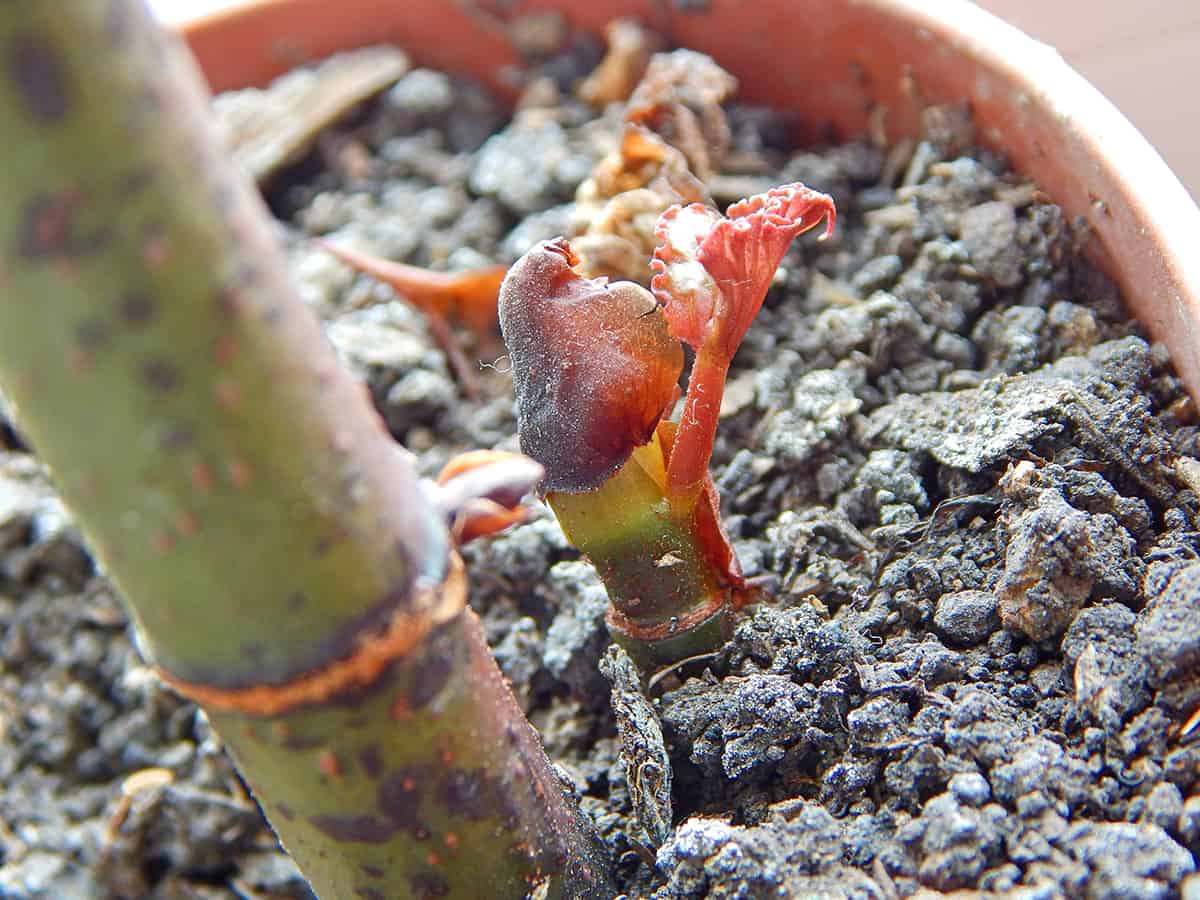
Angel Wing Begonia propagation is simple. You can propagate these plants using leaf cuttings or shoot cuttings.
For leaf cuttings, select a healthy leaf and cut it into sections. Each section should contain at least one vein. Place the sections on moist soil and cover with plastic to create humidity. Roots often develop at the veins.
With shoot cuttings, cut a healthy stem just below a node. Remove lower leaves, leaving a few at the top. Dip the cut end into rooting hormone powder to encourage root growth. Plant the stem in moist soil and cover it to keep the humidity high. It usually roots in a few weeks.
To multiply your Angel Wing Begonias, ensure the right conditions. They need warmth, bright indirect light, and high humidity. Avoid direct sunlight as it can damage the delicate leaves and stems. In ideal conditions, new growth will appear within a few weeks. It’s vital that you keep the soil consistently moist but not waterlogged, as excessive water can lead to rot.
For a personal touch, some gardeners enjoy propagating from tuber and rhizome cuttings.
Pruning
Begin by removing dead or yellowing leaves regularly. This allows your plant to focus energy on new growth. Use clean, sharp shears to make precise cuts.
Cut back leggy stems to promote a bushier appearance. Aim to cut just above a leaf node, where new leaves will sprout. Pruning in spring helps the plant recover faster.
Pinch off the tips of new growth to encourage branching. This simple step results in a fuller plant. Pruning correctly can also prevent disease by improving air circulation within the foliage.
Remember to discard the cuttings to keep your growing area tidy. Regular pruning will reward you with a vibrant, healthy Angel Wing Begonia.
Potting and Repotting
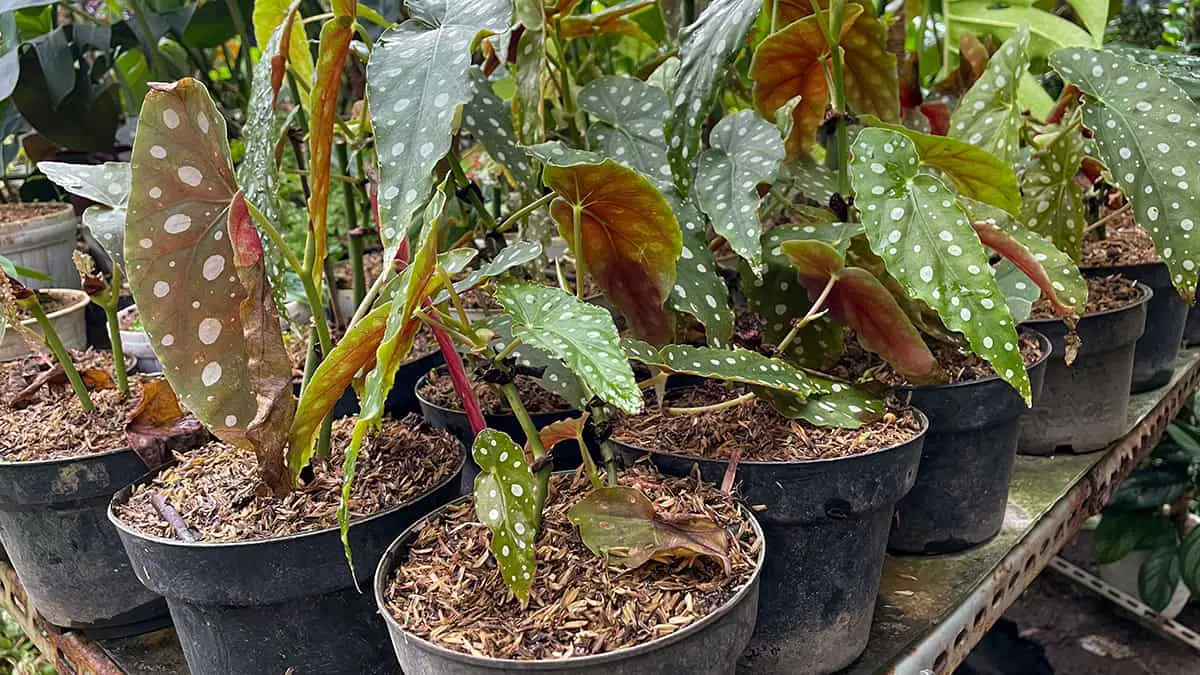
Your Angel Wing Begonia thrives in well-drained soil. Begin with a pot that has drainage holes to prevent water from sitting around the roots, as this can lead to root rot.
When it comes to potting mix, choose a light, airy blend. The right soil helps your plant grow strong. Add perlite or coarse sand to improve drainage if needed.
Repotting is essential for growth. Do this once your Begonia has outgrown its current home or every two years. Spring is the best time to repot as the plant enters a period of active growth.
Carefully remove your plant from the old pot, shaking off excess soil. Trim dead or tangled roots before placing it in a new pot. Choose a pot one size larger than the old one. Then, fill with fresh potting mix and water well.
Adequate potting creates the foundation for a healthy Angel Wing Begonia. Remember these steps to ensure the well-being of your plant.
Common Problems
Angel wing begonias can encounter several issues you should watch for. One issue is Botrytis blight, a fungus that attacks plants in humid conditions. Your angel wing begonia may have grey, dusty growth on infected tissue.
To deal with this, ensure good air circulation around your plants. Regularly remove any fallen leaves or dead flowers. Overwatering can cause roots and stems to rot, so keep the soil moist but not soaked.
Pest infestations are another common problem. Insects like aphids and spider mites might target your plant. They feed on the sap and weaken the begonia.
If pests appear, you can often remove them with a strong water spray or use insecticidal soap. Pesticides are an option but use them as a last resort.
Nutrient deficiencies can manifest in yellow leaves or slow growth. A balanced, water-soluble fertilizer can address the issue. Use it sparingly to prevent overfertilization.
Finally, improper lighting can harm your angel wing begonia. While they like light, too much direct sun can burn the leaves. Place your plant in bright, indirect light to encourage vibrant leaf color and growth.
Angel Wing Begonia Varieties
Angel Wing Begonias are a popular choice for indoor plant enthusiasts. They get their name from their unique leaf shape. These plants come in various colors and patterns. You’ll find their leaves can range from green to deep red.
One common variety is the Angel Wing Begonia. It can grow from 1 to 2.5 feet tall. It features large, wing-shaped foliage. This foliage often has silver dots and red undersides.
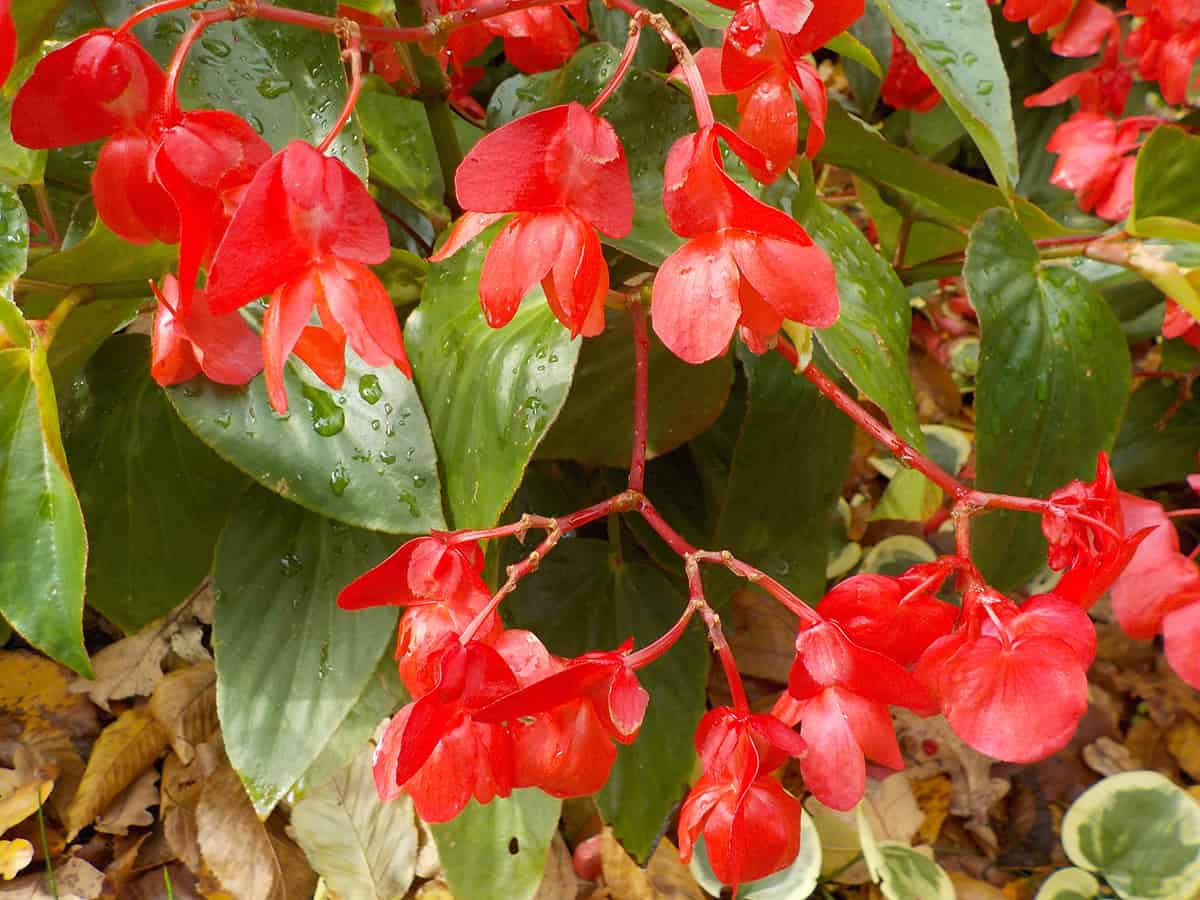
Another sought-after type is the Dragon Wing Begonia. It’s a robust plant, reaching 2 to 3 feet. It has glossy green leaves and blooms with clusters of red, pink, or white flowers.
To enhance indoor spaces, you might select the Metallic Leaf Begonia. This plant owes its name to its shimmering leaves. It can grow up to 12 inches and is known for its striking appearance.
